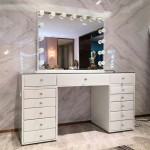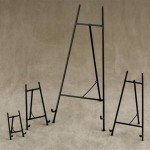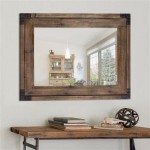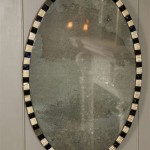Mirror Ball Definition: An In-Depth Exploration
A mirror ball, also known as a disco ball or glitter ball, is a spherical object covered in small mirrors. These mirrors reflect light in many directions, producing a complex and dazzling display. This reflective property, combined with its often slow rotation, creates patterns of light that move around a room, transforming the atmosphere and adding a sense of dynamism and excitement. While often associated with nightclubs and dance floors, the mirror ball's applications extend beyond entertainment, finding use in art installations, architectural designs, and even scientific demonstrations.
The construction of a mirror ball involves meticulous craftsmanship. Typically, a lightweight core, often made of plastic or foam, provides the structural foundation. Individual square or hexagonal mirrors are then carefully adhered to the core's surface. The adhesive used must be strong and durable to withstand the ball's rotation and movement without the mirrors detaching. The size of the mirrors and the overall diameter of the ball can vary considerably, influencing the scale and intensity of the light patterns projected. The reflecting qualities of the mirror ball depend on selecting high-quality mirrors that maximize brightness and clarity. There is variation in the glass type or reflective material used in the mirror squares that influence the effect of the reflections projected by the effect.
The effectiveness of a mirror ball is directly related to its illumination. A spotlight is typically directed toward the ball, providing a concentrated source of light for the mirrors to reflect. The characteristics of the spotlight, such as its brightness, beam angle, and color temperature, contribute significantly to the overall visual impact. Brighter spotlights will generate more intense reflections, while a narrower beam angle will concentrate the light on a smaller area, producing sharper, more defined patterns. Colored spotlights can introduce a range of hues into the light display, further enhancing the visual spectacle.
The rotation of the mirror ball is another crucial element in its operation. A motor, usually concealed within or above the ball, provides the rotational force. The speed of rotation can be adjusted to create different effects. Slower rotations produce languid, sweeping patterns of light, while faster rotations generate a more frenetic and energetic display. The motor's reliability and smoothness of operation are essential to ensure consistent and uninterrupted performance. The specific rotation rate can contribute greatly to the atmosphere that the mirror ball is trying to achieve.
Key Point 1: The Physics of Light Reflection
Understanding the physics of light reflection is fundamental to grasping how a mirror ball functions. The mirrors on the ball's surface operate based on the principles of specular reflection. Specular reflection occurs when light rays strike a smooth surface, such as a mirror, and bounce off at an equal angle to the incoming rays. This creates a clear, undistorted reflection of the light source. Since the mirror ball is covered with numerous small mirrors oriented at different angles, each mirror reflects a portion of the incoming light in a different direction. This results in the characteristic scattering of light that defines the mirror ball's visual effect. The size and shape of each individual mirror, and the precision with which they are placed, can all contribute to the overall spread of light. The distribution of light will vary greatly depending on the quality of the manufacturing of the device.
The intensity of the reflected light is influenced by the reflectivity of the mirrors. Mirrors with higher reflectivity will bounce back a greater percentage of the incoming light, resulting in brighter and more vibrant reflections. The type of material used to create the mirror, such as glass or acrylic, affects its reflectivity. Cleanliness is also critical; dust and smudges on the mirror surface can reduce reflectivity and diminish the overall brightness of the light display. Regular cleaning of the mirror ball helps maintain its optimal performance. The surface finish of the mirrors, if it is especially polished, will have a greater effect. Imperfections in the glass will affect the reflectivity by scattering the light at different locations.
The angle of incidence, which is the angle at which light strikes the mirror surface, also plays a role. At shallower angles, the reflectivity of the mirror may decrease, resulting in weaker reflections. However, the overall effect of the mirror ball is the cumulative effect of the reflections from all its individual mirrors, compensating for variations in the angle of incidence. The positioning of the spotlights on a location with a mirror ball installation will heavily influence how prominent each of the individual mirror reflections are.
Key Point 2: Applications Beyond Entertainment
While commonly associated with nightclubs and dance parties, the mirror ball has found applications in a variety of other contexts. In art installations, mirror balls can be used to create immersive and interactive experiences. Artists often employ them to manipulate light and space, transforming a room into a dynamic and engaging environment. The reflective properties of the mirror ball can also be used to distort and fragment images, creating surreal and dreamlike effects. These installations often provoke thought and reflection on themes of perception, reality, and identity.
Architects and interior designers have also incorporated mirror balls into their designs. They can be used to add visual interest and a sense of glamour to a space. A strategically placed mirror ball can reflect light in a way that enhances the overall brightness and ambiance of a room. In retail settings, mirror balls can be used to attract attention and create a visually appealing display. The movement of the light reflections can draw customers' eyes and encourage them to explore the products on offer. Commercial applications have expanded to use variations in the lighting and the motion control to add novelty to various settings.
Furthermore, mirror balls have found applications in scientific demonstrations. They can be used to illustrate the principles of light reflection and refraction. By shining a laser beam onto a mirror ball, it is possible to visualize the complex patterns of light that are created. This can be a valuable tool for teaching students about optics and the behavior of light. The simplicity of the device in combination with the complexity of the light patterns often makes it an ideal device for demonstrations and installations.
Key Point 3: Technological Advancements and Variations
The traditional mirror ball has evolved over time, incorporating technological advancements and variations in design. Modern mirror balls may feature embedded LED lights that can be programmed to display a range of colors and patterns. This adds a new dimension to the visual effect, allowing for even more dynamic and customizable displays. The use of LED technology also offers energy efficiency and longer lifespan compared to traditional spotlights. LED technology has introduced much more flexibility into the types of effects that mirror balls are capable of creating.
Another variation is the use of different materials for the mirrors. While glass mirrors are the most common, acrylic mirrors offer a lighter and more shatter-resistant alternative. Acrylic mirrors can also be molded into different shapes and sizes, allowing for more intricate and creative designs. Different reflective materials can affect the qualities of the light dispersed by the device.
The motors used to rotate mirror balls have also become more sophisticated. Modern motors offer precise speed control and can be programmed to rotate in different directions or at varying speeds. Some motors are even equipped with sensors that allow the mirror ball to respond to sound or music, creating a synchronized light and sound show. These innovations have expanded the possibilities for using mirror balls in entertainment and art installations. The ability to create and project varying light patterns is an important aspect to these technological advancements.
Beyond these specific enhancements, the broader integration of digital technology, such as projection mapping, can be combined with mirror balls. Projection mapping can be used to project images or patterns onto the mirror ball's surface, creating a hybrid of reflected and projected visuals. This allows for even more complex and immersive visual experiences. Combinations of digital technology and mirror balls can create unique and compelling displays for audiences.
In conclusion, the mirror ball is more than just a decorative object. It is a sophisticated tool for manipulating light and creating captivating visual effects. Its applications extend beyond the dance floor, finding use in art, architecture, and science. Continual advancements in technology are pushing the boundaries of what is possible with mirror balls, ensuring their relevance and appeal in the years to come.

Mirror Ball Photo Picture Definition At Dictionary Word And Phrase Defined By Its Image In Jpg Jpeg English

All That Glitters A History Of The Disco Ball

Are You A Mirrorball This Is Me Trying Goldrush Or Archer The Wrangler

How The Disco Ball Went From A Nightclub Staple To Tiktok S Latest Decor Obsession Architectural Digest

Mirror Ball Emoji Meaning Copy And Paste

Disco Ball Print Definition Wall Art Girly Dorm Room Decor Vintage Mirror Poster Black White Instant Digital

How The Disco Ball Went From A Nightclub Staple To Tiktok S Latest Decor Obsession Architectural Digest

All That Glitters A History Of The Disco Ball

Yayoi Kusama Narcissus Garden Article Khan Academy

4k Colorful Big Disco Ball 1 Hour Of Relaxation With The Best







